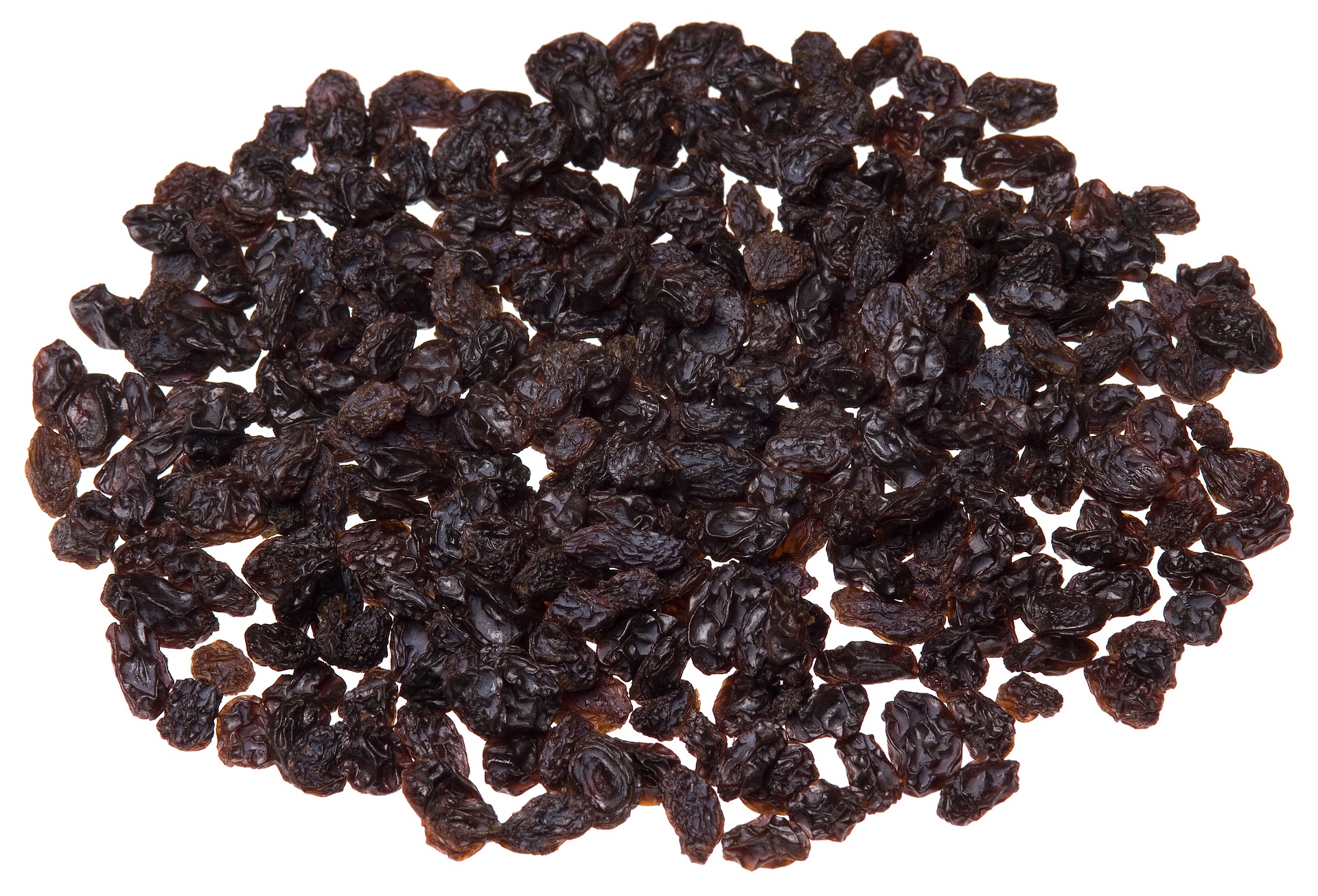The difference between currants and raisins is more complex than one would at first assume.
Let’s check it out.
- Currant: a small seedless raisin, produced chiefly in California and in the Levant, and used in cookery and confectionery; the small, edible, acid, round fruit or berry of certain wild or cultivated shrubs of the genus Ribes; the shrub itself; any of various similar fruits or shrubs.
- Raisin: a grape of any of various sweet varieties dried in the sun or by artificial means, often used in cookery.
Currants have a wide and somewhat confusing definition. As we’re about to learn, there are two types (well, more than that, but for argument’s sake here, two) of currants – one is a raisin, and one is not.
Let’s start with raisins –most of us know what those are. They are dried grapes. Specifically, they’re dried white grapes, that turn a darker color when dried. The process of drying depends on the brand, but they’re always made from white grapes. Raisins have all the nutrition of grapes, but are sweeter, and chewier.
Currants that are real, fresh, red or black currants, are hard to find in the US. They’re grown in rainy areas, such as in Britain; if they are cultivated in this country it’s typically in the Pacific Northwest.
In 1911, based on insufficient data, real currants were banned in this country by Congress. It was believed that the small fruits contributed to the spread of white pine blister rust, which seriously threatened the timber industry in the US.
Basically, the currant bush serves a host for the white pine blister rust, and black currants are more susceptible to this than red. However, a farmer named Greg Quinn was able to prove there are new resistant and immune varieties.
Working with Quinn, Cornell University performed a study in 2003 that successfully reversed the ban on growing currants, at least in New York State.
So, for almost all of the 1900s, currants were essentially not grown in this country. But, a food item that became known as a currant was introduced.
During the 1920s, Greece began exporting to our country small, dried, seedless grapes – raisins. They were a quarter of the size of average raisins. They come from the Black Corinth grape, grown on the Ionian island Zakynthos, also called Zante. Upon arriving at the dock in America, the Greek word for “Corinth” was mistranslated as “currant.”
Therefore, for decades and decades we Americans were using what are called Zante currants as currants in baking, when in fact, a Zante currant is actually a raisin, albeit a small one.
Hence, in the dictionary definition of a currant, we see both “small seedless raisin” and “small. . .round fruit or berry.”
If you see dried currants, they’re likely to be Zante currants. There are of course, real dried black currants, which look like Zante currants, but are even smaller.
Let’s look at a more simple breakdown:
- Raisins: dried white grapes.
- Zante currants: dried seedless grapes.
- Black currants: black berries.
- Red currants: red berries.
And then there are:
- White currants: a type of red currant.
- Sultans: dried seedless white grapes.
In conclusion, currants are berries grown on bushes, and raisins come from grapes which are grown on vines; they’re two different fruits.
Currants are tart; raisins are sweet. Currants are small, round, and glossy; raisins are slightly bigger, dark, and shriveled.
And again, Zante currants are a misnomer, because they’re actually raisins.
